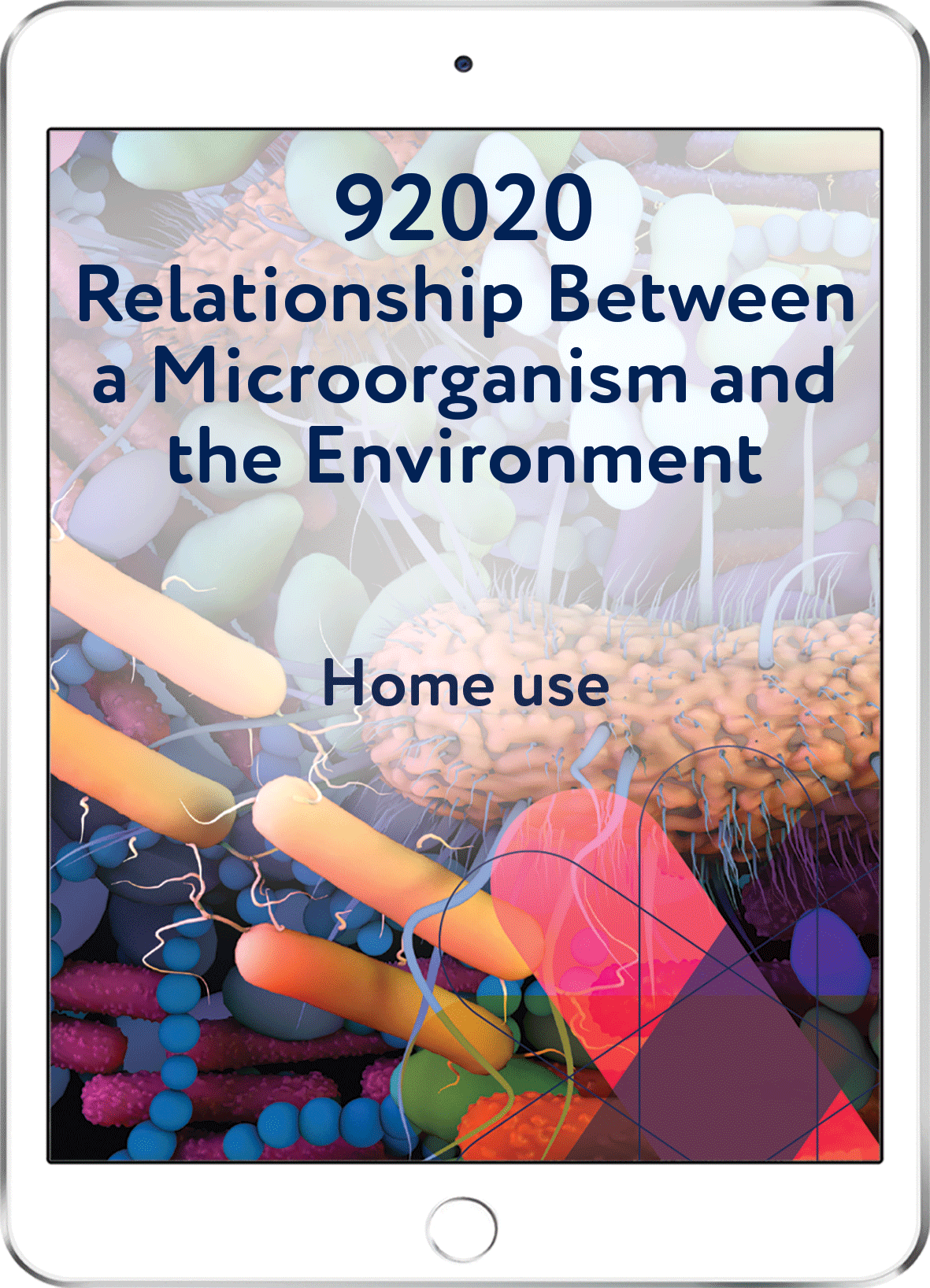92020 Relationship between a Microorganism and the Environment - Home Use
92020 Relationship between a Microorganism and the Environment - Home Use
LearnWell
This version of the resource is for home use. Students work independently through the resource. If you are a teacher, you should purchase the school use version.
New NCEA Achievement Standards
Couldn't load pickup availability
This resource covers learning from NCEA Level 1 Science Achievement Standard 92020 (Chemistry and Biology 1.1) Demonstrate understanding of the relationship between a microorganism and the environment.
What you’ll learn
Microorganisms have a really important ‘connector’ role throughout our environment. This course explores that relationship between the two in depth.
This course is broken into five sections.
1. Take a journey into a microscopic world | He haerenga ki tētahi ao mōkitokito
In this section you'll learn about:
- what microorganisms are, and some of the main types
- the seven life processes all living microorganisms carry out
- key biotic and abiotic environmental factors and how these influence microorganisms’ growth and survival.
2. Meet the bacteria | Tūtakitaki ki ngā huakita
In this section you'll learn more about:
- different bacteria and how they impact our everyday lives
- how bacterial structure influences its function, so you can explain the changes you see when they are interacting with their environment
- some key life processes in bacteria – nutrition and digestion, respiration, excretion, and reproduction and growth.
3. At home with the fungi | Te nohotahi me te hekaheka
In this section you'll learn more about:
- microfungi like yeasts and moulds, and how they are structured
- some key life processes in microfungi – nutrition and digestion, respiration, excretion, and reproduction and growth.
4. Getting to know some viruses better | Kia mōhio pai ake ki wētahi huaketo
In this section you'll learn more about:
- what viruses are and how they are structured
- the viral life cycle and viral replication.
5. Investigating the relationship between microorganisms and their environment | Kia mātai i te hononga o ngā moroiti ki tō rātou taiao
In this section you'll:
- learn how to grow bacteria and fungi for investigations
- investigate the effects of temperature, pH, nutrient availability and toxins on microbial life processes through lots of examples and case studies
- learn about the effects of vaccines on microbial life processes
- learn about the effects of UV light, antiseptics, disinfectants and antivirals on viral life processes
- examine how in turn, various life processes of the microorganisms can also affect particular abiotic or biotic factors of their surrounding environment.
LearnWell Digital resources put the learner at the centre. Using almost any device, students can easily work at a pace that suits them through interactive, scaffolded learning and activities.
For the print format of this resource, click here.

